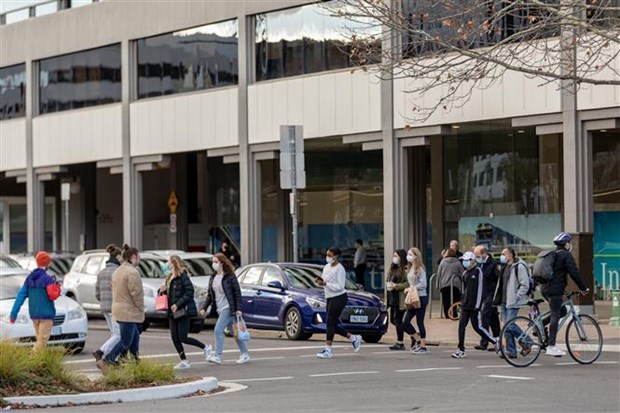
People wear masks to prevent the COVID-19 epidemic in Canberra (Australia),
According to the Vietnam News Agency correspondent in Sydney, since the COVID-19 pandemic broke out in Australia early last year, the Australian federal government has directly provided more than 291 billion AUD (more than 200 billion USD) in direct support to households and families. businesses are in trouble.
Since June this year, the Australian Government has made changes to its hardship allowance policy, including paying the COVID-19 disaster benefit directly to workers who have lost their jobs and income due to the lockdown. spread epidemic prevention.
Under this policy, eligible people will receive 750 AUD/week if lost more than 20 hours of work, or 450 AUD/week if lost between 8-20 hours. About 2 million people in Australia have received a total of AUD 9.35 billion ($6.4 billion) in benefits since the government announced the subsidy.
As localities across the country are accelerating the progress of vaccination against COVID-19, with the two most populous states, New South Wales and Victoria, expected to reach 70% vaccination rates in the next two weeks, the Minister Australian Treasurer Josh Frydenberg on September 28 said the subsidy policy will change when localities have 70% of the population aged 16 and over fully vaccinated.
Specifically, when a state or territory reaches the 70% full immunization mark, the automatic renewal of subsidy payments will end and residents in areas still under lockdown will have to re-register. weekly to confirm eligibility for benefits.
When 80% of full immunization coverage is reached, the subsidy will be maintained for 2 weeks prior to termination, but reduced to AUD 450 and AUD 320 respectively in week 1 and week 2, applicable to those lost 8 or more hours of work per week. With that, federal government subsidies to businesses will also end.
For those who haven't returned to the workforce after the economy reopens and the government stops paying hardship benefits, the social security system will support those people until they're out, Frydenberg said. back to work.
Australia's Treasurer affirmed that when the epidemic prevention and control restrictions ease, the economy will recover quickly and businesses and households need to plan for the future soon. As of September 29, more than 52% of people aged 16 and over in Australia had received a second dose of the vaccine.